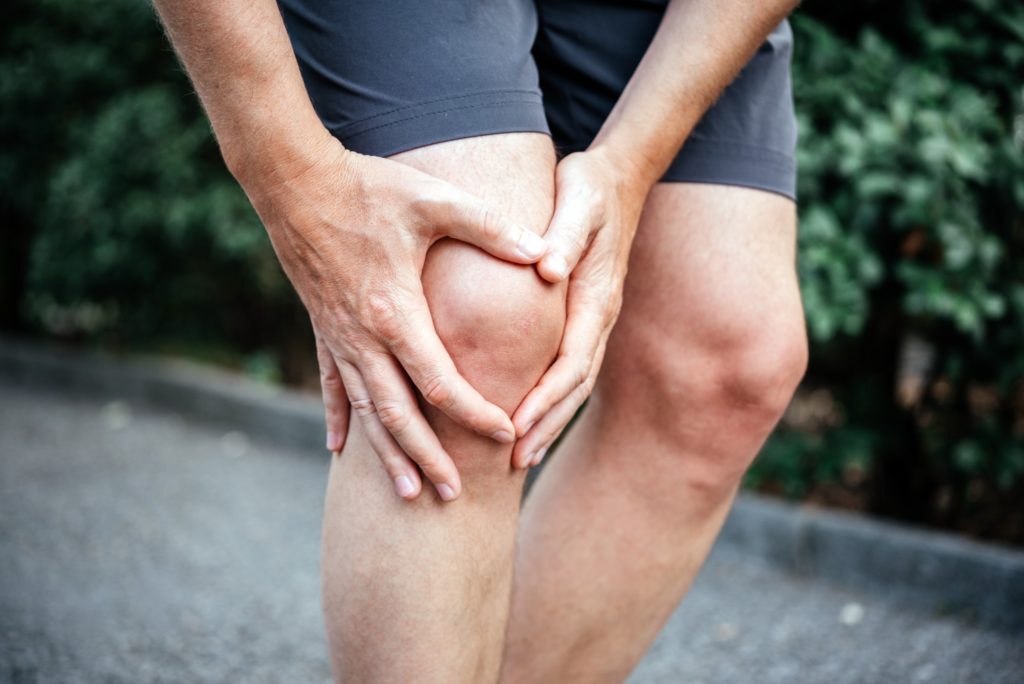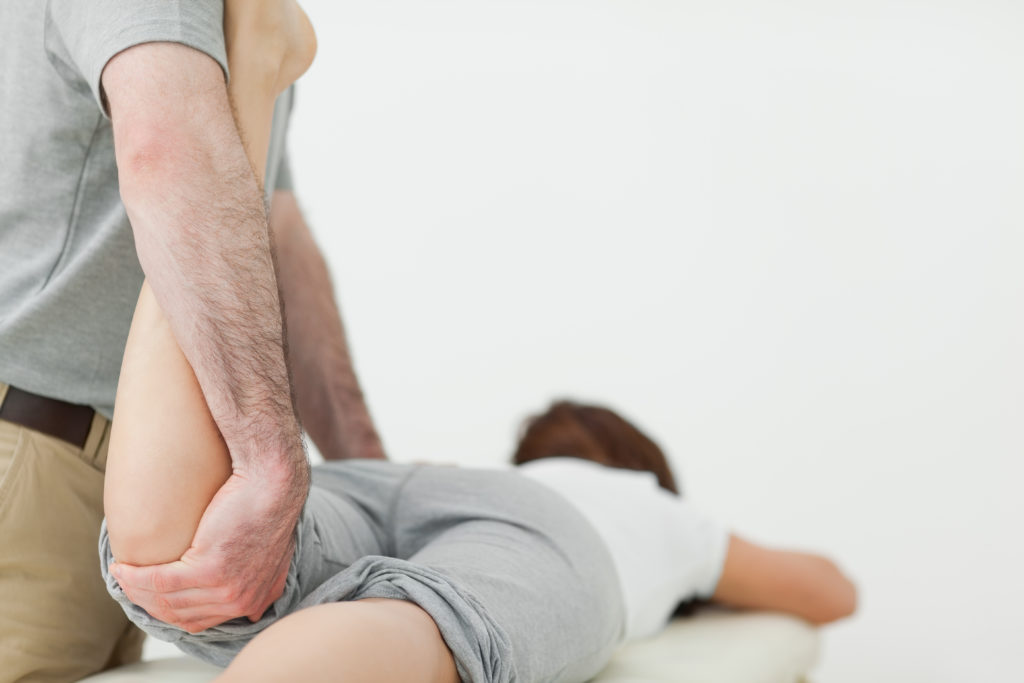November 21, 2022
7 Reasons Your Knee Hurts When You Bend It
The knee is a hinge joint responsible for your mobility and flexibility. Your knees are constantly moving from sitting, walking, bending, and high-impact physical activities such as running, sports, or work-related duties. It is the most common joint that can become inflamed. Your daily activities can be interrupted when it hurts when you bend your knee.
Why Does It Hurt to Bend My Knee?
Conditions causing knee pain are usually related to sudden, traumatic injury, wear-and-tear due to aging, or damage to parts of the joint. Knee pain can feel dull and achy, cause a burning sensation, or create shooting pains. It can also feel like your knee will give away when you try to bend your knee while standing up or walking.
Let’s look at seven reasons why your knee hurts when you bend it, a few tips for managing discomfort, and how to prevent knee pain.
1. Injury
Injuries can make your knee hurt when you bend it. You will likely know right away if you have had an injury to your knee. You may have hit it against a hard surface, fallen, or had an injury due to exercise, sports, or work activities. Your knee may begin to swell within 24 hours of the injury due to inflammation in the joints. Bending your knee may be painful. You can treat knee pain by using the RICE method:
- Rest
- Ice
- Compression

- Elevation
2. Overuse
Knee pain due to overuse occurs gradually over time and not from a specific incident. You may have difficulty bending your knee or straightening your leg. The pain can be in the front or back of the knee and worsen when walking up steps, running, squatting or sitting for an extended period.
The cause of overuse knee pain can be from weak muscles in the legs, tight muscles in the thighs or hips, misalignment of the legs, high foot arches, or trauma from overtraining.
You can relieve knee pain from overuse by stretching correctly before physical activities, building up the muscles around the knees or wearing a brace. A physician may recommend steroid injections to ease inflammation and pain.
3. Bursitis
Bursitis occurs when the cushions around the joints in your knee become inflamed. The cushions help the joints move easily against your muscles, tendons, and ligaments. Bursitis symptoms include knee pain when you bend it, swelling, and a feeling of warmth.
The condition often goes away after a few weeks of rest, but flare-ups can happen. However, it can cause your joints around the knees to become stiff.
4. Sprained Knee Ligaments
A sprained ligament can cause knee pain when you bend or squat. The ligaments are tissues that hold bones together and make them stable, but they can become overstretched or torn when you turn your knee one way, and the upper or lower leg turns in the opposite direction. You can damage your ligament because of twisting or bending movements in physical activities.
A stretched ligament will heal over time with rest. You may need to wear a brace to immobilize the joint until it heals. A torn ligament may require surgery. Your physician can make a recommendation on the best option for your condition.
5. Tendonitis
Inflammation of the tendons can cause swelling and make your knee hurt when you bend it. Tendons are the tissues that attach muscles to your bones to aid in movement. Tendonitis occurs when the tendons become inflamed from overuse. It is often seen in runners because of the repetitive motion of the knees when running.
The condition can cause tendons to become weaker and make the knees more vulnerable to injury. Mild tendonitis will improve with rest and taking time off from the activity that caused it.
6. Arthritis
Arthritis is a chronic inflammation of the knee joints. It can cause pain when bending, swelling, and stiffness in the knee joints. Several types of arthritis can affect the knee, including:
- Osteoarthritis: The most common form of arthritis is this degenerative condition where the cartilage in the knee wears away over time. Because it develops slowly, the pain can worsen over time. It can occur in both knees and only in one knee.
- Rheumatoid arthritis: This form of arthritis is also a chronic condition, but it attacks the joints in the knees. It usually affects both knees because it is an autoimmune disease rather than a wear-and-tear condition.
- Posttraumatic arthritis: This type of arthritis develops after an injury, such as a broken bone, eventually leading to knee damage. Tears in the ligaments can weaken the knee’s stability and cause additional wear on the knee joint.
Symptoms of arthritis of the knee can be eased with over-the-counter anti-inflammatory drugs like ibuprofen. Lifestyle changes like losing weight to reduce pressure on the knees, low-impact exercise like walking, and reducing activities that aggravate the condition can help with knee pain.
7. Meniscus Tears
When the meniscal cartilage in the knee is damaged, it can cause your knee to hurt when you bend it. The thick meniscus cartilage sits between the shinbone and thigh bone, allowing the knee joint to flex and move freely. It is an elastic cartilage but can become torn or damaged through trauma or injury. Sometimes, it can be caused by deep squatting, kneeling, or bending your knee.
Common symptoms are pain, swelling, stiffness, and a popping sensation when bending or stretching your knee. Athletes are at risk for meniscus tears in the knee. Treatment for the condition depends on the severity but includes the RICE method mentioned above, steroid injections, and, in some cases, surgery.
How to Prevent Knee Pain
The knees are the largest joint in the body, so they take most of the impact of your movements. You can prevent knee pain when bending and further damage to the joints, ligaments, and tendons with a few simple changes to your daily habits.
- Exercise: Regular physical activity keeps your muscles strong so they can support your joints.

- Stretching: Stretching, even on your days off from exercise, will increase flexibility.
- Proper footwear: Keep your body in alignment with the right shoes to prevent knee injuries.
- Maintain weight: Keep off the extra pounds to decrease stress on your knees.
- Physical therapy: Chronic knee pain can benefit from professional input on exercises to address to causes of knee pain.
- Orthotics: Knee braces can stabilize the joints and help with healing. Shoe inserts can provide extra support for the feet and keep your legs in alignment.
When to See a Doctor
You do not have to live with pain, especially when daily activities cause your knee to hurt when you bend it. If you have tried at-home remedies and still feel discomfort in your knees, make an appointment with a board-certified doctor at Healthcare Associates of Texas. Our team will work with you to find the best treatment for your knee pain.
DISCLAIMER
The information featured in this site is general in nature. The site provides health information designed to complement your personal health management. It does not provide medical advice or health services and is not meant to replace professional advice or imply coverage of specific clinical services or products. The inclusion of links to other web sites does not imply any endorsement of the material on such websites.